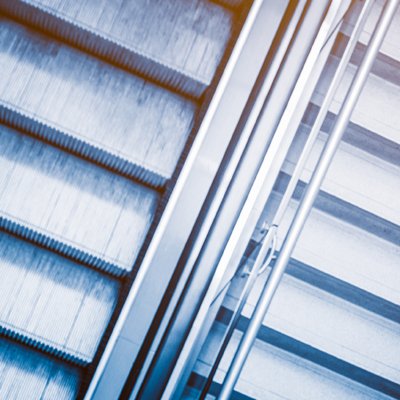Article 21 -Static Test of Escalator Step Tread Surface
Required Static Test for Escalator Step Tread Surface
In this article, we intend to explain the static test procedure of the escalator step tread surface and its requirements according to standard EN 115-1:2017
For the escalator step deflection test we must apply a single perpendicular load of 3000 N (including the weight of plate) to the tread surface center on a steel plate (0.20 m x 0.30 m & at least 25 mm thick). The edge of the plate which is 0, 20 meters long must be arranged parallel to the front edge of the escalator step and the other edge of the plate which is 0, 30 meters long must be placed at right angles to the front edge of the step.
The escalator step deflection must not be more than 4 millimeters and no permanent deformation must be seen but initial tolerance settings are acceptable. This test must be applied to the escalator step with rollers (not rotating), axles, and stub shafts (if existing) together in horizontal position and at the maximum inclination. New tests are not required for inclinations less than the maximum. This test can be applied on a single escalator step and it is not required to be applied for the installed step on the guide rails located on the truss of the escalator.
For the escalator step side deflection test, near the skirt, we must apply a single perpendicular load of 1500 N on a steel plate (50 mm x 50 mm & at least 25 mm thickness) and in this case, the deflection of the tread surface on the sides must not exceed 4 millimeters.
If there are insert/fixing on the tread surface of the escalator step, we must only apply the perpendicular load on the insert/fixing itself. The area of the load must be 50 millimeters and its width must be equal to the width of the inserts and fixings. The direction of the applied load during the test must not be changed. After the test, no permanent deformation must be observed on the escalator step tread surface.



